
Names on the buses
816 Sir Herbert Carden
406 Sir Herbert Carden
816 Sir Herbert Carden

Names on the buses
406 Sir Herbert Carden
Connections with Brighton and Hove : The maker of modern Brighton was a solicitor who served as Mayor during part of the First World War. A Socialist in a Tory town, Sir Herbert Carden was much respected by his colleagues for his forward thinking. Carden was keen to preserve the Downs both from development and as a water catchment area. He bought land when it became available and then sold it to the Corporation at cost price. In this way, Brighton was able to build up a downland holding of more than 10,000 acres including some land in neighbouring districts such as what is now Lewes. Carden served on the council from 1895 until his death in 1941. He was made a freeman of the borough and knighted for his services to Brighton. Thanks to his energy and commitment, Brighton became a pioneer in such matters as trams, telephones, electricity, and road widening and housing. He also paid half the £2,000 costs of erecting the Pylons north of Patcham on the A23 to commemorate the expansion of Brighton’s boundaries in 1928. Carden’s ideas would not always find favour today. He advocated pulling down the Royal Pavilion and making the seafront a boulevard which would have entailed knocking down most of the Regency and Victorian buildings.

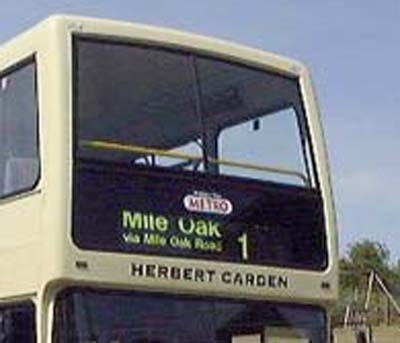
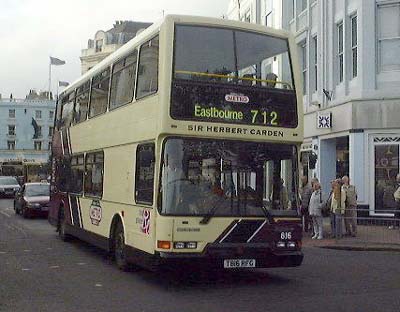
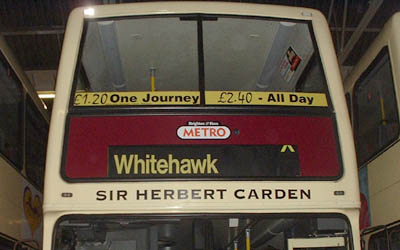

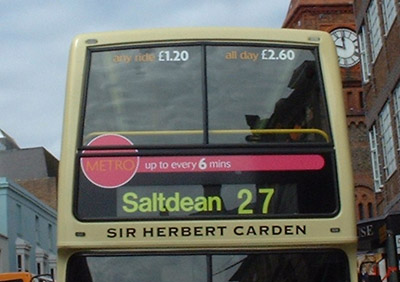



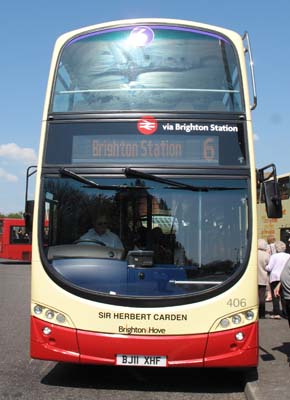



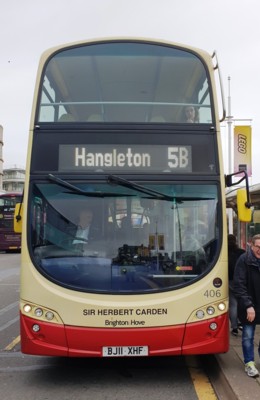
816 Dennis Trident - carried name since delivery in May 1999, originally named Herbert Carden, Sir added July 1999, originally on METRO Line 1 then repainted into new METRO Line 1 livery from April 2004, changed to Metro 7 from April 2007. April 2011 name transferred to 406 Volvo Gemini. Repainted into revised Route 6 livery December 2016. Route 6 branding removed March 2023. Bus sold June 2024.